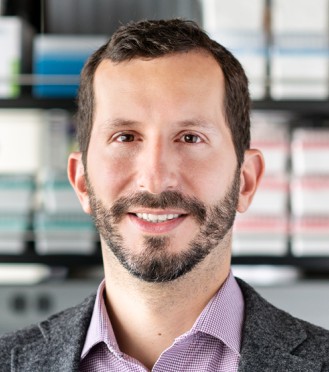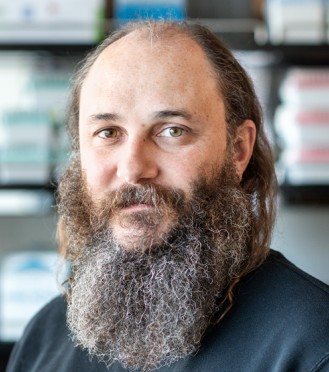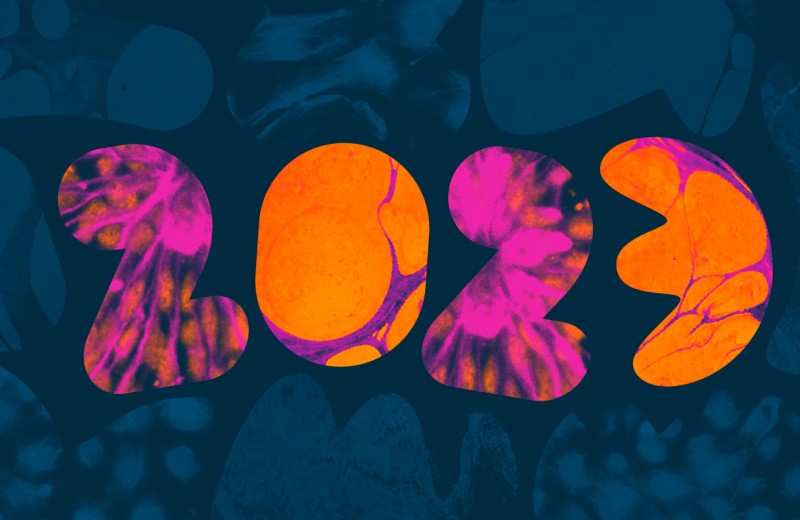Gladstone NOW: The Campaign Join Us on the Journey✕

In 2024, Gladstone’s scientists published nearly 160 peer-reviewed studies, with key discoveries that opened new doors for treating conditions such as Alzheimer’s, heart disease, cancer, and drug-resistant infections. Here are 10 stories that have helped propel our science and mission to new levels as we enter 2025.
1. In Patients with Long COVID, Immune Cells Don’t Follow the Rules

A team led by Nadia Roan found that people with long COVID have dysfunctional immune cells that show signs of chronic inflammation and faulty movement into organs, among other unusual activities. The discovery paves a path toward answering ongoing questions about the different types of long COVID, the mechanisms that cause it, and how to treat and prevent it. Read more.
2. $5 Million Grant Bets on Computational Biology, AI to Change the Future of Cancer

A team led by Katie Pollard received funding to launch a new center focused on using AI to identify and pursue the most promising research avenues for cancer diagnostics and treatment. Learn more.
3. CRISPR-Based Mapping Uncovers ‘Switches’ for Immune Genes Central to Health

Alex Marson, Jimmie Ye, and their colleagues mapped the regulation of key genes that control immune function, providing insight into immune balance, autoimmune diseases, and the development of cancer immunotherapies. Learn more.
4. New One-Step Method to Make Multiple Edits to a Cell’s Genome

Harnessing the power of bacterial immune systems, Seth Shipman and his lab created a new genetic editing tool that can make precise, simultaneous edits in multiple locations within a cell to overcome limitations of previous methods. Learn more.
5. Discovery of How Blood Clots Harm Brain and Body in COVID-19 Points to New Therapy

A cross-disciplinary team led by Warner Greene and Katerina Akassoglou discovered that the blood-clotting protein fibrin is a key driver of inflammation and neurological symptoms in COVID-19 and long COVID. Their findings overturned the previous hypothesis that clotting was merely a consequence of inflammation. A potential therapy targeting fibrin is now in clinical trials. Learn more.
6. Gladstone Institutes Launches Capital Campaign to Accelerate a Biomedical Revolution
Gladstone Institutes has launched a five-year, $350 million campaign to add more than 300 scientists and 15 state-of-the-art laboratories, develop the next generation of biotechnologies, and advance discoveries to the clinic as rapidly as possible. Learn more.
7. Gladstone Researchers Discover How Chronic Inflammation Worsens Heart Failure

Deepak Srivastava and Michael Alexanian collaborated on a study that uncovered how immune cells trigger the heart to form scar tissue after a heart attack, identifying a new strategy to prevent excessive scar tissue formation without interfering with healthy immune response. Learn more.
8. 3D Shapes of Viral Proteins Point to Previously Unknown Roles

In a study led by Jennifer Doudna, scientists used new computational tools to predict the 3D shapes of viral proteins, revealing shared mechanisms viruses use to evade the immune system that could be targeted with antiviral therapies. Learn more.
9. Brain Immune Cells Amplify Damage Caused by Alzheimer’s Risk Gene, Study Finds

By transplanting human neurons into mouse brains, Yadong Huang and his team uncovered disease-causing interactions between the APOE4 protein and immune cells called microglia. Their findings suggest that drugs reducing microglia may eventually be useful in treating the disease. Read more.
10. Understanding How the Immune System Switches Between Rest and Action

Leveraging CRISPR gene editing technology, a team led by Alex Marson uncovered how a single protein controls the behavior of key immune cells, regulating when the cells are active or at rest. The discovery could have applications for treating cancer and autoimmune conditions—and could ultimately help in creating more effective immunotherapies. Read more.
Read about all of Gladstone's science news and achievements of 2024 in our interactive year-in-review timeline.
Featured Experts
Support Discovery Science
Your gift to Gladstone will allow our researchers to pursue high-quality science, focus on disease, and train the next generation of scientific thought leaders.
2024 Year in Review
2024 Year in Review
Revisit some of the most impactful moments that defined 2024.
HistoryA Year of Scientific Achievements at Gladstone
A Year of Scientific Achievements at Gladstone
Highlights from 2023
HistoryGladstone Mourns the Loss of Longtime Trustee Albert Dorman
Gladstone Mourns the Loss of Longtime Trustee Albert Dorman
Dorman served as a Gladstone trustee for over 30 years
History Profile









